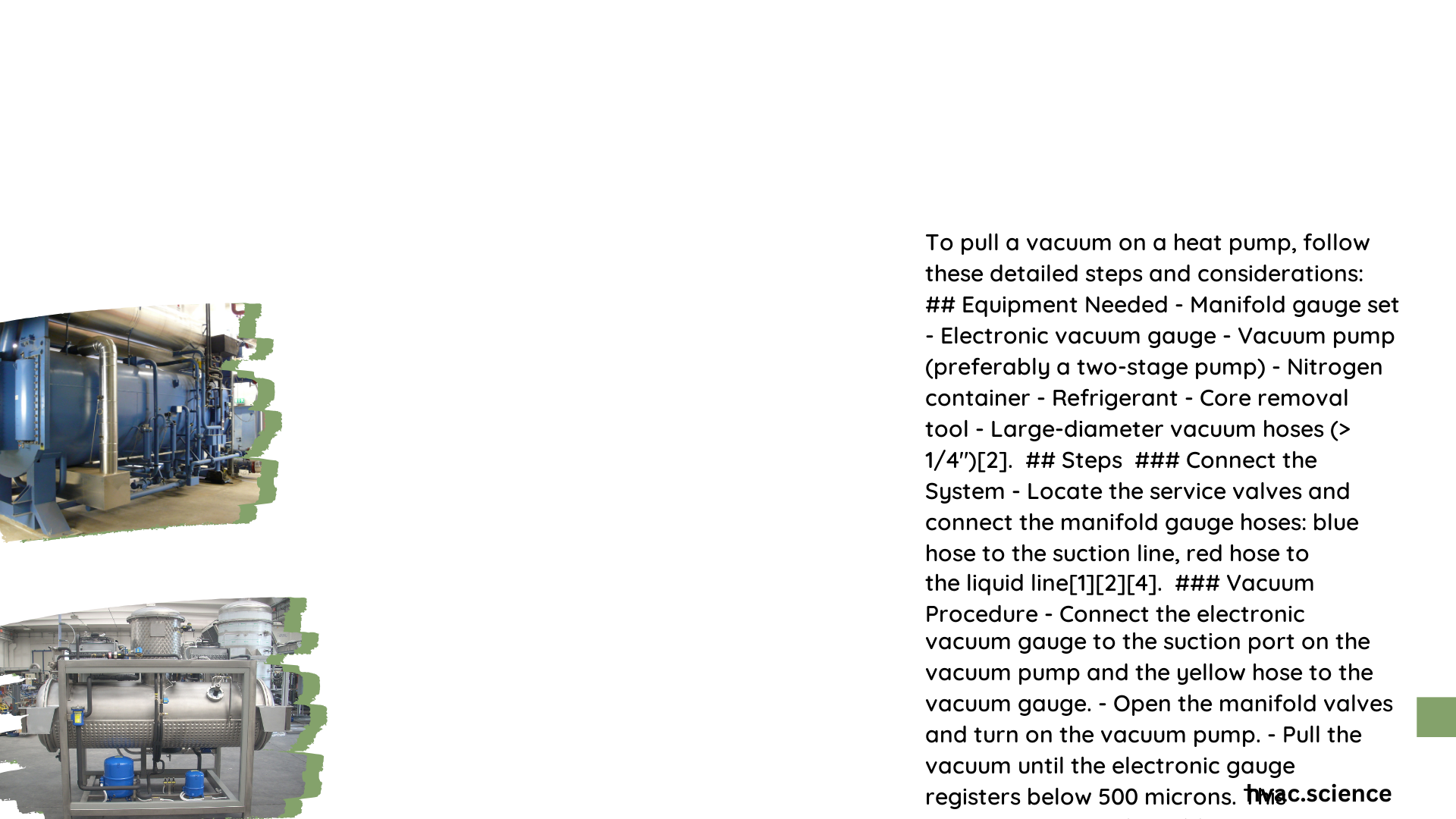Heat pump pull vacuum is a critical technical procedure ensuring optimal system performance and longevity. Professionals utilize specialized equipment and precise techniques to remove moisture, non-condensable gases, and contaminants from refrigeration systems, creating an environment that guarantees maximum efficiency and prevents potential mechanical failures during heat pump operation.
What Makes Heat Pump Pull Vacuum Critical?
Heat pump pull vacuum represents a sophisticated diagnostic and preparatory process that directly impacts system reliability. By systematically removing air and moisture from refrigeration circuits, technicians create ideal conditions for refrigerant circulation and heat transfer.
Why Vacuum Matters in Heat Pump Systems?
Vacuum evacuation serves multiple crucial purposes:
- Moisture Removal
- Eliminates water vapor that could freeze or cause corrosion
- Prevents potential system damage
-
Ensures long-term operational integrity
-
Non-Condensable Gas Extraction
- Removes air and other gases that impede heat transfer
- Improves overall system efficiency
- Reduces potential performance degradation
What Tools Are Essential for Heat Pump Pull Vacuum?

| Tool | Purpose | Recommended Specification |
|---|---|---|
| Two-Stage Vacuum Pump | Primary evacuation equipment | Capable of reaching 50 microns |
| Micron Gauge | Precise pressure measurement | Electronic, high-resolution |
| Vacuum-Rated Hoses | Connection and conductance | Large diameter (3/8″ or larger) |
| Schrader Core Removal Tool | Minimize system restrictions | Vacuum-specific design |
How to Perform Systematic Vacuum Evacuation?
Preparation Stage
- Inspect and replace vacuum pump oil
- Ensure all connections are clean and properly sealed
- Check equipment calibration and functionality
Evacuation Procedure
- Remove Schrader cores from service ports
- Connect large-diameter vacuum hoses
- Attach high-quality micron gauge
- Perform optional nitrogen purge
- Initiate evacuation process
- Monitor micron gauge readings
What Are Acceptable Vacuum Levels?
Recommended vacuum levels vary, but industry standards suggest:
- Target Vacuum: 500 microns or less
- Maximum Acceptable Rise: Less than 1500 microns during standing test
- Evacuation Duration: 15-60 minutes for typical residential systems
What Factors Influence Vacuum Performance?
Several variables impact heat pump pull vacuum effectiveness:
- System size and complexity
- Ambient temperature
- Equipment quality
- Technician expertise
- Refrigerant type
Pro Tips for Successful Vacuum Evacuation
- Always use fresh, clean vacuum pump oil
- Verify all connections are leak-free
- Maintain equipment regularly
- Follow manufacturer-specific guidelines
- Document evacuation parameters
Common Mistakes to Avoid
- Rushing the evacuation process
- Using inappropriate or worn-out equipment
- Neglecting proper oil maintenance
- Ignoring standing test results
- Skipping preliminary system inspection
Conclusion
Mastering heat pump pull vacuum requires technical knowledge, precision, and commitment to best practices. By understanding underlying principles and employing systematic approaches, HVAC professionals can ensure optimal system performance and longevity.
